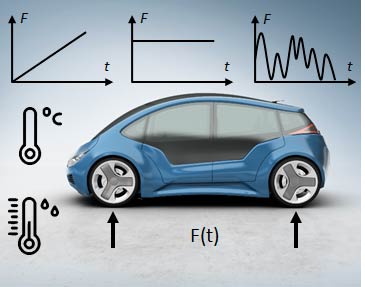Objectives
Components made of Short Fiber Reinforced Plastics (SFRP) are typically manufactured via injection molding. Hereby, the resulting local microstructural configuration of the composite, i.e. the spatial arrangement of the fibers, highly influences the deformation and failure behavior of the macroscopic component.
Later in the application, products made of these composites are exposed to harsh environments and severe operational loads. Aiming at the development of products with high reliability requirements in a time- and cost-efficient manner, simulation methods with high accuracy predictions and efficient adaption routines are becoming increasingly important.
To achieve this, robust multiscaling techniques must be established that contain elements of virtual material testing where a large portion of the required experiments are transferred from the lab to the computer. This requires an explicit modeling of all relevant deformation and failure mechanisms on the microscopic scale using Representative Volume Elements (RVEs) in combination with numerically efficient Fast Fourier Transformation (FFT) solvers. Aiming at a data-driven multiscaling approach, the results of these microstructural simulations are transferred to a database which is the basis for a precise anisotropic virtual analysis of plastic components on the macroscopic scale. With a view to fracture mechanical processes in SFRP components, this ESR project is addressing the extension of existing data-driven multiscaling approaches for SFRPs towards anisotropic fracture using the phase field (PF) approach.
The first objective of this ESR project is the theoretical formulation and numerical implementation of this PF-model into a commercial FEM package. The second objective is the calibration and validation of the developed model with experimental results based on macroscopic boundary value problems with different complexity ranging from plain samples to product-like demonstrator components.
Doctoral program
ESR-6 will be enrolled as doctoral student in the Department of Mechanical and Process Engineering at ETH Zürich, Switzerland.
Secondments
6 months at ETH Zürich (Switzerland) and 4 months at Sorbonne Université Paris (France).


